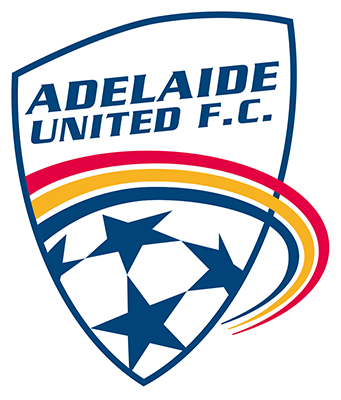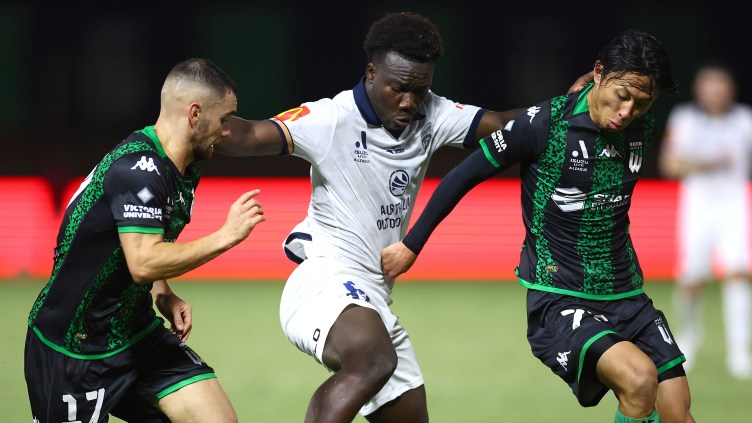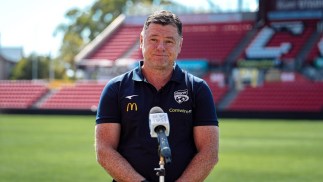When it comes to providing footballers to the A-League some regions, such as Adelaide are more than pulling their weight.
The Hyundai A-League is taking several matches into the regions this season, with games in Bathurst, Morwell and Launceston.
In previous seasons we-ve seen league matches in Canberra and Port Macquarie, while in the A-League-s early years, pre-season cup matches were held in regions such as Toowoomba, Mount Gambier, Mandurah and Darwin.
Meanwhile the Wellington Phoenix has continued their tradition of taking matches to other New Zealand cities in 2011/12, with games in Auckland and Otago – the Auckland match at Eden Park attracting an impressive crowd of more than 20,000.
Moving a match from the comfort of a club-s home venue to a regional centre is not a straightforward exercise.
Uprooting a match from a club-s home base presents many logistical issues, and removes the home-ground advantage, while matches in regional towns often means smaller crowds than at home venues, due partly to the lower populations in these regions.
But taking A-League matches to these centres is fair acknowledgement and reward for the regions. And it can only help develop football further in these areas – areas that already play an important part in the development of the game in Australia.
An analysis of birthplaces of all 344 Australian-born players who have made at least one A-League appearance (from the start of the league in 2005 to January 2012) provides some indication of the role that regions have in producing some of the country-s best players.
Analysis of players by place of birth is not meant to be an accurate way of assessing which areas have produced the most players. For example some Australians raised in Melbourne, such as Kevin Muscat and Billy Celeski, were born overseas; while prominent long-time Queenslanders Craig Moore and former Roar coach Frank Farina were actually born in other parts of Australia. But it does provide some indication.
Not surprisingly, the country-s most populated cities have provided the vast bulk of A-League players born in Australia.
Of the five Australian cities with more than one million people, Sydney is the place of birth for most players, with 113 A-League players born in the NSW capital, followed by Melbourne (51), Adelaide (34), Perth (28) and Brisbane (16).
To make our analysis of players by birthplace more meaningful, let-s consider the populations of regions.
Comparing the number of players born by region to the population in these regions gives an idea of the relative contribution these regions have made to football.
For instance, it shouldn-t be a surprise that New South Wales is the state with the highest number of A-League players born there, because NSW is the country-s most populated state. The larger the population of a region, the bigger pool that region has to provide players.
The population figures used in this analysis are the latest prepared by the Australian Bureau of Statistics, renowned for producing some of the finest quality population data in the world.
So what parts of Australia have provided more or less of their fair share of A-League players by birthplace? And what are some of the hot spots of A-League players- birthplaces outside of Australia-s biggest cities?
When we consider the relative populations of the big five cities, it is Adelaide leading the way in producing A-League players. Almost ten per cent of all A-League players were born in Adelaide – however Adelaide has just 5.4 per cent of the country-s population.
In other words Adelaide has produced nearly twice its ‘expected- share of A-League players born in Australia.
Sydney is the only other one of the five major cities to have produced more than its expected share of A-League players. Sydney is the birthplace of 32.8 per cent of Australian-born players, but only has 19.1 per cent of the country-s population.
Melbourne (14.8 per cent of players, 18.3 per cent of population) and especially Brisbane (just 4.7 per cent of players but with 9.2 per cent of the country-s population) are lagging in providing their share of footballers, while Perth (around 8 per cent of both players and population) is producing close to its fair share of players.
Outside of the country-s biggest metropolitan areas, there are some regions which stand out significantly in terms of high numbers of A-League players considering their relatively small population sizes.
Wollongong is one such region, being the city of birth of ten A-League players so far. This means that Wollongong is the birthplace 3.4 per cent of Australian born players – despite being home to just 1.3 per cent of the country-s population. Wollongong-born talent include in-form current players Pedj Bojic (Central Coast Mariners), Matthew Jurman (Brisbane Roar) and Mile Sterjovski (Perth Glory).
Another hot spot is the far north Queensland area around Cairns, with seven A-League players (2.0 per cent of all Australian-born players) born in this region of only 170,000 people, or 0.75 per cent of the country-s population.
Cairns is the birthplace of Shane Stefanutto (currently with Brisbane Roar) and Zenon Caravella (Adelaide United), while Melbourne Heart-s Wayne Srhoj hails from nearby Mareeba. Sydney FC assistant coach and former playing great Steve Corica comes from Innisfail, which is just north of Cairns.
Other prominent current A-League players from regional Queensland include Bundaberg-born Clint Bolton (Melbourne Heart), Joshua Rose (Central Coast Mariners) from Rockhampton, and Kasey Wehrman (Newcastle Jets) born in Cloncurry.
Outside of its major cities, regional NSW also provides a significant share of A-League players. The northern NSW cities of Lismore (birthplace of the Glory-s Adam Hughes), and Tamworth (Troy Hearfield from the Mariners) are a couple of many regional NSW areas represented in the A-League birthplace list, while the Mariners- new excitement machine Tomas Rogic originally hails from Griffith in the state-s inland south.
A region that only recently turned up in the A-League birthplace listing is Hobart, the original home of two young goalkeepers Jerrad Tyson (Gold Coast United) and Jack Duncan (Newcastle Jets), who both made their A-League debuts recently. It will be interesting to see how Tasmania, a region not known for producing many footballers who have made it to the national stage, fares over the next few years.
This season-s series of Regional Round matches in the Hyundai A-League has put some spotlight on some of the parts of the country sometimes forgotten about when it comes to their contribution to football in Australia.
But the contribution of these regions is actually quite significant.
Follow Andrew Howe-s Aussie football stats updates on Twitter @AndyHowe_statto




